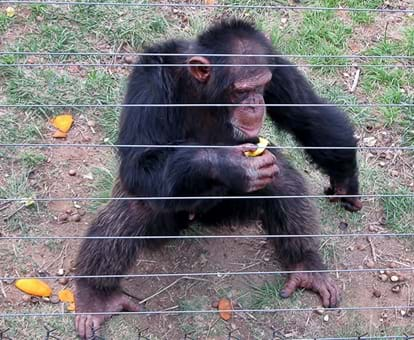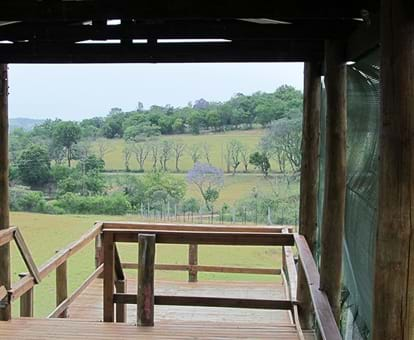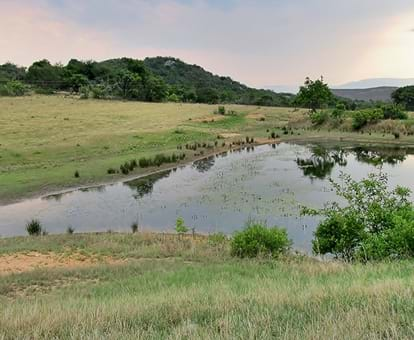By creating an account, I agree to the
Terms of service and Privacy policy
Choose your country and language:
Africa
Americas
Asia Pacific
Europe
TThe Jane Goodall Institute’s Chimpanzee Eden, set in a forested reserve between Nelspruit and Barberton, has brought hope, peace and some degree of normality to dozens of traumatised chimpanzees from all over Africa. Visiting the sanctuary is a moving and uplifting experience.
The day starts with the balding Joao, well over 60 years old, doing a handstand. Claudine, a new arrival, greets Cozy. Martha plucks up her courage and sits beside Jessica to groom her.
Claude, still in quarantine, lets out a whoop of delight as crates of bananas, donated by a local farmer, are carried past his window.
IIt’s a happy life for these 33 primates at the Chimpanzee Eden near Nelspruit, but their cheerful behaviour belies their individual tragic histories.
Each one of these chimpanzees has been rescued by the Jane Goodall Institute, mostly from logging and the related bushmeat trade. While adults are killed, the babies are kept as pets or sold all over Africa.
LLika was kept for years in a dark brick cage in Luanda, Angola. It took her a very long time to adjust to other chimpanzees – she hadn’t seen one since her family was killed.
Nina was a little orphan, confiscated from bushmeat hunters in Sudan. She and the other little ones from Sudan – Thomas, Dinka, Zee and Charlie, still tend to stick together. A few others were rescued from circuses.
Chimpanzee Eden, Nelspruit
ZZac and Guida were chained to trees outside a nightclub in Luanda and were severely undernourished. They’d also been taught to drink alcohol and smoke cigarettes to amuse guests, and their fur was falling out. Zac’s recovery, in particular, was one of the most dramatic at the Jane Goodall Institute’s Chimpanzee Eden.
It’s unlikely that any of these chimpanzees can ever be released back into the wild, simply because conditions are perilous for them all over the continent.
But here they live a semi-wild chimpanzee life – foraging, interacting with each other in massive treed enclosures on this 1000-hectare nature reserve, eating healthy food. They are treated with constant kindness – something in short supply in their previous lives.
Related articles
South Africa on social media




